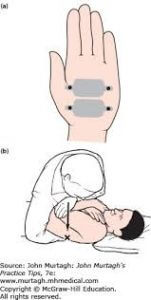Is Thoracic Spinal Manipulation effective for treating subacromial impingement shoulder pain?
Subacromial impingement syndrome
Shoulder pain is one of the most common musculoskeletal disorders seen by physical therapists with many potential contributing factors and researched treatment methods. Among various causes of shoulder pain or pathologies studied, subacromial impingement syndrome (SIS) is the most frequently reported. It is difficult to differentiate SIS from other shoulder disorders, particularly from rotator cuff injuries. However, in the clinical physiotherapy setting where imaging techniques are not readily available, both SIS and rotator cuff injuries are often treated as one injury, at least in the short term. In fact, in the “complaints of the arm, neck and/or shoulder model” developed in Netherland, SIS is regarded as a specific disorder and it includes rotator cuff syndromes (Huisstede, Miedema, Verhagen, Koes, & Verhaar, 2007).
Regional interdependence
Various treatment models have been suggested to address shoulder issues. Recently, research and clinical practice have focused on using thoracic spinal manipulation as an adjunct to traditional interventions primarily focused on the shoulder and cervical spine. A significant number of studies has shown the physiological and biomechanical link between thoracic spine and shoulder pain, function, strength, and motion, (Sueki & Chaconas, 2013). This relationship between “seemingly unrelated impairments in a remote anatomical region may contribute to, or be associated with, the patient’s primary complaint” has been termed as ‘regional interdependence’ (Wainner, Whitman, Cleland, & Flynn, 2007, p.658).
Thoracic spinal manipulation
Recently, the concept of regional interdependence has gathered significant interest in manual therapy research. It is being widely practiced by clinicians as well in treating shoulder pain mainly because of increasing number of studies advocating the concept (Boyles et al., 2009; Muth, Barbe, Lauer, & McClure, 2012; Strunce, Walker, Boyles, & Young, 2009) and also the fact that patients are happy when their pain is reduced without being manipulated in their painful region. Moreover, the effects of  thoracic spinal manipulation (TSM) have been investigated and practiced widely because it is relatively safer than cervical spinal manipulation and there are biomechanical relationships between the thoracic spine and shoulder movement (Theodoridis & Ruston, 2002). “Research is demonstrating that a relationship exists between thoracic spine manipulation, shoulder pain, and shoulder function. While the physiology underlying such a relationship is still unclear, homeostasis and the body’s allostatic response may provide an explanation for the regionally interdependent relationship”, (Sueki & Chaconas, 2013). The study was done by Strunce et al. (2013) on the immediate effects of TSM and ribs manipulation on subjects with primary complains of shoulder pain has suggested the immediate post-treatment improvement with reduced shoulder pain and increase in involved shoulder AROM. Furthermore, the results of this study also supported the concept of a regional interdependence between the thoracic spine, upper ribs, and shoulder. Similar results of significant improvements in pain and disability with TSM in patients with subacromial impingement syndrome (SIS) were reported by Muth et al. (2012), Boyles et al. (2009) and Strunce et al. (2009) who investigated the effects of TSM in patients with shoulder pain.
thoracic spinal manipulation (TSM) have been investigated and practiced widely because it is relatively safer than cervical spinal manipulation and there are biomechanical relationships between the thoracic spine and shoulder movement (Theodoridis & Ruston, 2002). “Research is demonstrating that a relationship exists between thoracic spine manipulation, shoulder pain, and shoulder function. While the physiology underlying such a relationship is still unclear, homeostasis and the body’s allostatic response may provide an explanation for the regionally interdependent relationship”, (Sueki & Chaconas, 2013). The study was done by Strunce et al. (2013) on the immediate effects of TSM and ribs manipulation on subjects with primary complains of shoulder pain has suggested the immediate post-treatment improvement with reduced shoulder pain and increase in involved shoulder AROM. Furthermore, the results of this study also supported the concept of a regional interdependence between the thoracic spine, upper ribs, and shoulder. Similar results of significant improvements in pain and disability with TSM in patients with subacromial impingement syndrome (SIS) were reported by Muth et al. (2012), Boyles et al. (2009) and Strunce et al. (2009) who investigated the effects of TSM in patients with shoulder pain.
However, recent studies suggest that clinical improvements following TSM in those patients are not caused by biomechanical changes (Muth et al., 2012; Rosa, Alburquerque-Sendin, Salvini, & Camargo, 2013). “Immediate improvements in shoulder pain and function post-TSM are not likely explained by alterations in scapular kinematics or shoulder muscle activity. For people with pain associated with RCT, TSM may be an effective component of their treatment plan to improve pain and function. However, further randomized controlled studies are necessary to better validate this treatment approach” Muth et al,. (2012).
Conclusion
Although a number of studies are advocating for the significant positive outcome of TSM in subacromial impingement syndrome, most of these studies are not done in a double-blinded randomized controlled trial environment and do not include control groups. In addition, in clinical practice, the treatment of subacromial impingement syndrome is not limited to spinal manipulation but includes various other forms of manual therapy, exercises, and therapeutic modalities. The effectiveness of exercises in improving pain and function in patients with shoulder pain or subacromial impingement syndrome has been reported by a number of well designed clinical trials. But there is still a lack of specific guidelines that which specific exercise or what combination of interventions provides better outcomes (Hanratty et al., 2012). Therefore, currently, limited evidence guides us to include TSM as an adjunct to physiotherapy treatment of SIS, however, it is critical to further investigate the effectiveness of TSM as an adjunct to exercise with randomized controlled design to better validate this treatment approach.

Good read. Have you personally used TSM in your practice and found it effective?